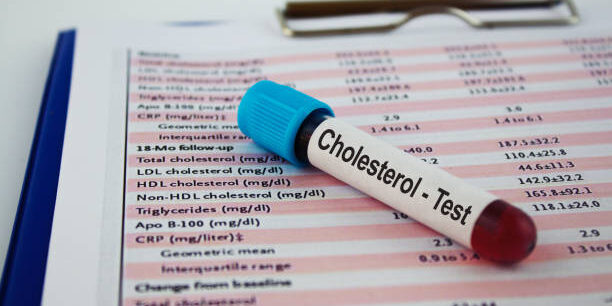Importance of the Triglyceride to HDL Ratio

I commonly review the cholesterol panel of individuals after their doctor prescribes statin therapy for elevated cholesterol. Invariably, patients and physicians focus on the total cholesterol and LDL values when determining the risk for the development of coronary artery disease. Statin drugs are frequently started when the LDL or total cholesterol value is high, even at an elevated HDL level. I believe that this approach may be a mistake for many patients. Before instituting statin use, It is essential to understand the value of all lipid profile components in predicting risk.
One of the most important things I emphasize in assessing each patient under my care is to look at the total patient rather than the individualized lab results. Physicians must look at the patient rather than the computer screen and the laboratory results. It is an essential part of an integrative care model.
Each individual needs to look at any health intervention (such as a statin drug) from the longevity and health span standpoint. If I have a patient who is following a healthy diet, is a non-smoker, exercises regularly, and is getting quality sleep and stress reduction, I am much less inclined to focus on statin therapy or LDL value in isolation.
Each patient is worried about their risk of having a cardiac event. I define an event as a heart attack, a need for coronary angioplasty/stent, or a need for bypass surgery. Lifestyle interventions are dramatically more beneficial when compared to statin therapy. Nonetheless, patients and doctors have been brainwashed to worry about the total cholesterol and LDL values. The reflex approach to these elevated values is to prescribe a statin drug no matter the other positive health parameters that may be present. My purpose is to alleviate that worry.
The risk of a cardiac event is most strongly linked to the triglyceride/HDL ratio. This risk predictor has been clearly defined in multiple studies. A triglyceride/HDL ratio of four to one or greater is concerning. My goal for patients is to get their triglyceride HDL ratio to less than two. This ratio is valuable because it is also a good predictor of the presence of small, dense LDL particles. The small, dense LDL is the most dangerous in provoking coronary artery lesions. The lower the ratio, the less likely the presence of these hazardous small particles. In addition, the triglyceride/HDL ratio is also a good predictor of insulin resistance. The likelihood of insulin resistance is much lower when the ratio is less than two to one.
Statins have no significant impact on triglyceride levels. Some statins may blunt or reduce the HDL. Although statins will lower the total cholesterol and LDL values, their effect can be blunted by reduced HDL.
The most effective ways to positively impact the triglyceride/HDL ratio are to focus on regular exercise, reducing carbohydrate intake, and progressive weight loss. Time-restricted eating and intermittent fasting will also have some benefits. I often recommend the addition of fish oil as a way of reducing triglyceride values. An added value of fish oil supplementation is a modest increase in HDL. Some physicians express concern that fish oil may elevate the LDL, but I am not concerned. The benefit of triglyceride/HDL ratio and the associated reduction in cardiac “event” risk seems much more critical. In many studies, I also believe fish oil supplementation dosing is inadequate. A higher dose of fish oil in the form of DHA and EPA in the range of 2-3 g combined appears to have significant benefits. These benefits also extend to the effect of omega-3 fish oil on brain cognition and inflammation. Many patients have noticed a considerable improvement in their inflammatory arthritis complaints when they combine fish oil with glucosamine sulfate.
There are ways to measure the size of the LDL particles, and these advanced lipid profile parameters can be quite beneficial, but they are somewhat costly. They can be confusing to interpret for some patients and physicians. I generally recommend these advanced lipid profiles only in higher-risk patients. I encourage patients to obtain an HS-CRP level, a marker of vascular inflammation. If their values are normal, I am much less inclined to consider statin therapy. An Apolipoprotein B level can also be obtained but is not often as valuable when the triglyceride/HDL ratio is less than two to one.
I am optimistic with patients regarding their lipid parameters when their triglyceride/HDL ratio is less than 4:1. I allow them to make lifestyle adjustments over three months to determine if they can alter their risk. I am much less concerned about total cholesterol and LDL values unless they are highly elevated. I also believe there are very effective ways to improve the triglyceride HDL ratio that are easily implemented and effective.
I recommend an advanced lipid profile in patients who cannot improve their triglyceride/HDL ratio. In the hands of capable physicians, alternative treatments to statin therapy can still be undertaken.
The stress provoked by a misdirected interpretation of standard lipid profiles can be alleviated by better understanding the actual risk prediction factors already present in this simple and easily obtained blood test. I have cared for a significant number of patients who have undertaken some simple lifestyle changes that have resulted in a dramatic improvement in their triglyceride/HDL ratio. These lifestyle changes have also reduced their long-term risk of developing symptomatic coronary artery disease. Importantly, it requires motivation and good collaboration between patient and physician. Still, there are very effective ways to treat long-term cardiovascular risk that do not necessarily require the use of statin drugs. Focusing on ways to improve the Triglyceride/HDL is a great way to avoid drugs and enjoy better heart health. Today is the day to start making this change!
